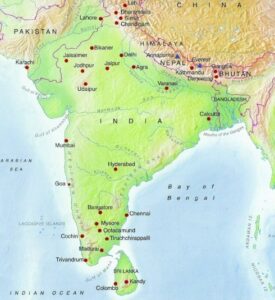Assess the role that soil conservation strategies have in halting desertification.
Humans highly play an important role in improving a go-green world through numerous initiatives and actions that generally help to reduce the environmental impact collectively and also promote sustainability. At first, humans can adopt eco-friendly habits like recycling, reducing waste, and conserviRead more
Humans highly play an important role in improving a go-green world through numerous initiatives and actions that generally help to reduce the environmental impact collectively and also promote sustainability. At first, humans can adopt eco-friendly habits like recycling, reducing waste, and conserving water and energy. Whereas, simple actions such as using reusable containers, bottles, and bags, and also minimizing single-use plastics while significantly contributing to conserving resources as well as reducing pollution.
On a large scale, businesses and communities can also implement green practices such as eco-friendly manufacturing processes, sustainable agriculture, and renewable energy usage. Investing and supporting in renewable energy sources such as hydroelectric, solar, and wind power helps to reduce reliance on fossil fuels which helps to lower greenhouse gas emissions.
Moreover, Awareness and education even play an essential role as individuals can easily influence broader societal changes by simply educating themselves and others about sustainable practices as well as environmental issues.
Therefore, humans can significantly impact the health of our planet through mindful daily options, advocacy for sustainable policies, and community actions which help to lead us towards a greener as well as more sustainable world.


Desertification is a critical environmental issue that threatens agricultural productivity, biodiversity, and the livelihoods of millions worldwide. Soil conservation techniques play a vital role in mitigating this phenomenon. This response evaluates the significance of these techniques through receRead more
Desertification is a critical environmental issue that threatens agricultural productivity, biodiversity, and the livelihoods of millions worldwide. Soil conservation techniques play a vital role in mitigating this phenomenon. This response evaluates the significance of these techniques through recent examples.
1. Understanding Desertification
Desertification is the process by which fertile land becomes increasingly arid and unproductive, primarily due to human activities and climatic changes. It leads to soil degradation, loss of vegetation, and reduced agricultural output.
2. Importance of Soil Conservation Techniques
Soil conservation techniques are essential for maintaining soil health and preventing the advance of desertification. Key techniques include:
3. Vegetative Cover and Agroforestry
Use of Vegetation: Planting cover crops and maintaining vegetative cover significantly contributes to soil conservation.
4. Water Management Techniques
Effective water management is crucial for combating desertification and enhancing soil conservation.
5. Community Involvement and Policy Support
The success of soil conservation techniques often hinges on community involvement and supportive policies.
6. Challenges and Future Directions
Despite the significance of soil conservation techniques, challenges remain:
Conclusion
Soil conservation techniques are crucial in combating desertification, enhancing soil health, and promoting sustainable agricultural practices. Through effective implementation and community involvement, these techniques can significantly mitigate the impacts of desertification, ensuring food security and environmental sustainability. Continued investment in education, policy support, and resource allocation will be vital for achieving long-term success in these efforts.
See less